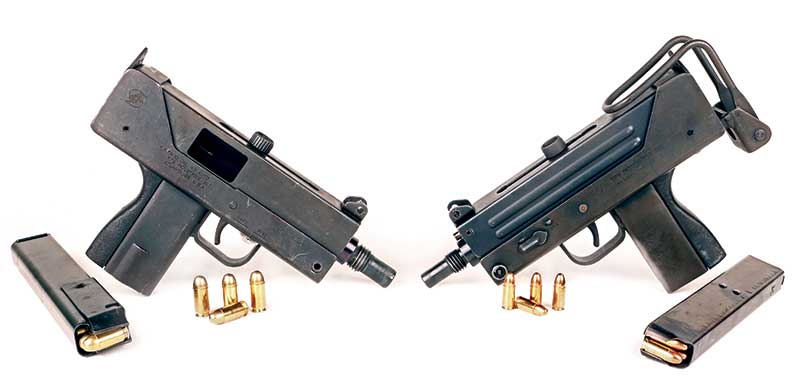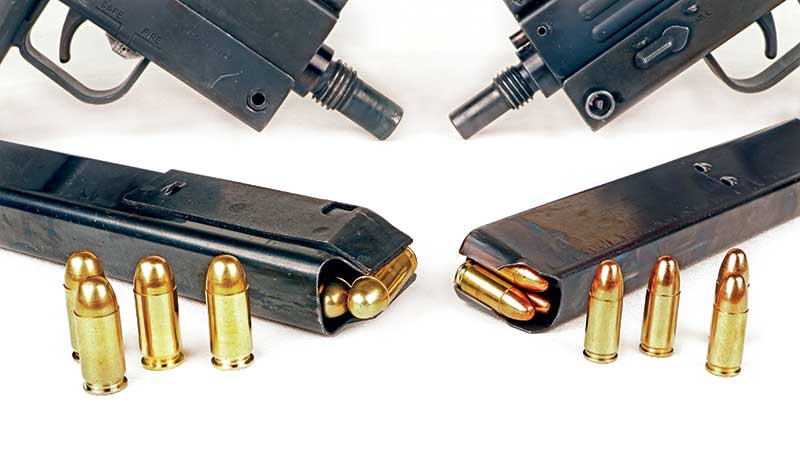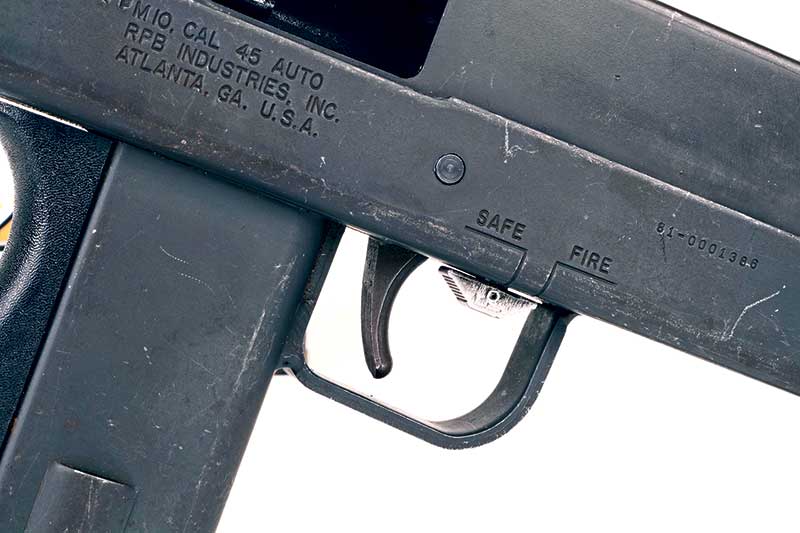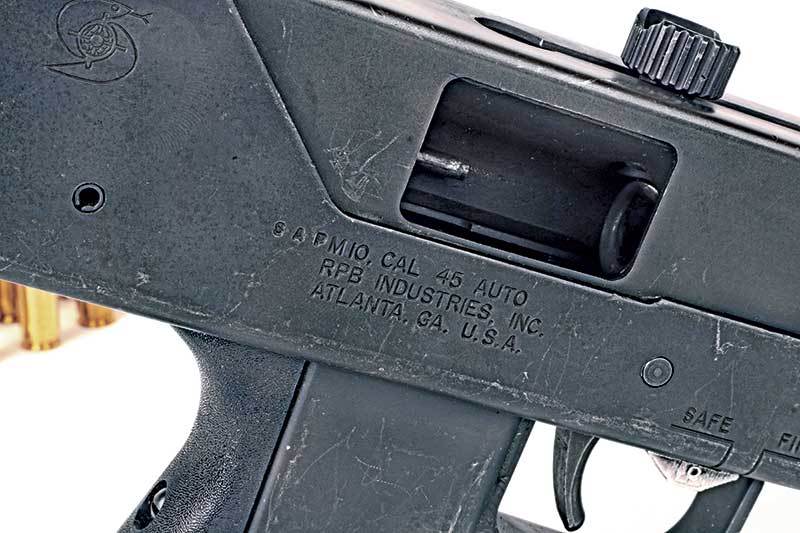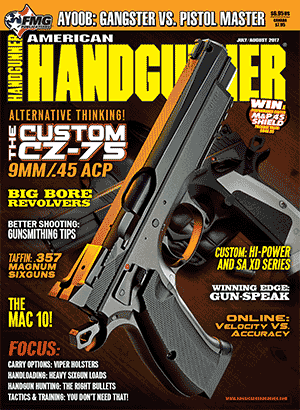The RPB MIO SAP And
"Filing Down The Sear"
A Different “Gun from A Different Time”
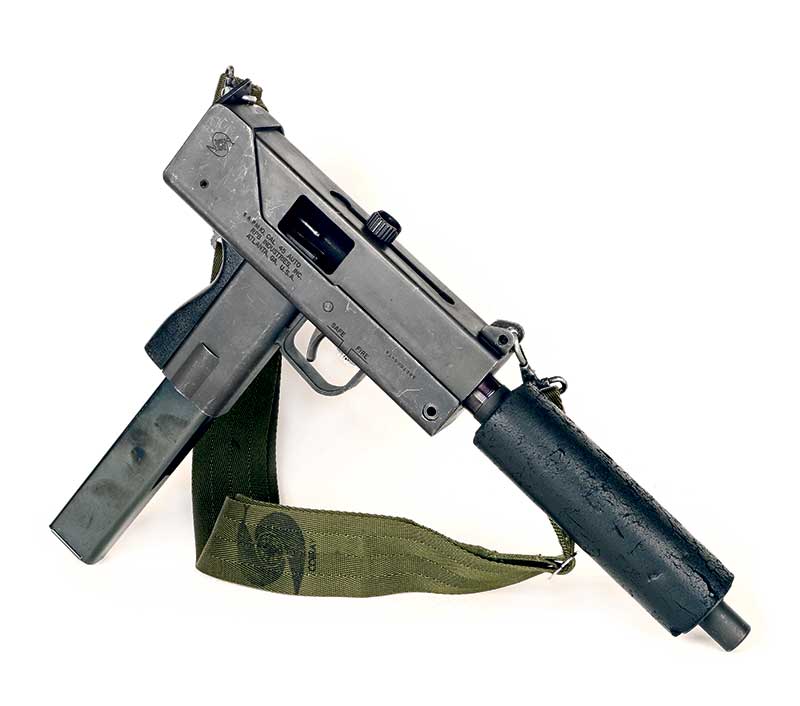
The RPB M10 SAP was an interesting historical footnote in the foundational history of the modern
American gun culture. Only slightly different from the corresponding full auto submachine gun, the
SAP sold briskly until South Florida drug dealers developed an affection for it. At that point the gun
was arbitrarily reclassified as a machinegun and RPB died a natural death.
For those of us who lived through them, the 1970’s were heady days. Star Wars left movie theaters awash in the copious drool of countless enraptured American boys. Jaws forever cured me from swimming in the open ocean, and clothing fashions seemed to have been crafted by sight-impaired chimpanzees on crack. Radical Radical Islam was invented around this time, and the sitting president of the United States was actually attacked by a rabbit (I’m not kidding. Google it.) Amidst such unprecedented change and a lot of unfiltered weirdness, it was also legal to build automatic weapons for sale to American citizens.
Each transfer required a $200 transfer tax, but machineguns were both plentiful and inexpensive. However, that $200 was the modern-day equivalent of $761, and it served as an effective deterrent to widespread machinegun ownership. The RPB Corporation built selective fire MAC10 submachine guns but found this artificially depressed market was inadequate to sustain the company. RPB subsequently designed a new semi-auto version of the Ingram M10 submachine gun, transfering as an otherwise unremarkable pistol. In so doing the gun would fill a substantial niche in the burgeoning market for “scary black guns” without all the bureaucratic baggage. This novel heater was the M10 SAP (Semi Auto Pistol).
The 1934 National Firearms Act regulating such stuff as machine guns, sound suppressors and grenade launchers stemmed from the Depression-era scourge of the motorized bandit. The 1968 Gun Control Act established our current system of Federal Firearms Licenses in response to the assassinations of John Kennedy and Martin Luther King. In 1982 the Bureau of Alcohol, Tobacco and Firearms prohibited a class of previously legal semi-automatic pistols in response to the ongoing violence of the South Florida drug wars. In so doing, they ultimately put RPB out of business.

The M10 SAP was very similar to its full auto cousin. At a glance you can discriminate between the
two by the lack of a selector switch at the left front aspect of the receiver. In the case of my gun,
the bolt handle also does not rotate into a travel lock position as do those on the full-auto guns.
Origins
Gordon Ingram designed the M10 submachine gun in 1964 as an exercise in modern mass production techniques. The guns were available in 9mm and .45 ACP. There was also a smaller version called the M11 in .380 ACP. They fired from the open bolt via advanced primer ignition and maximized the use of steel pressings. In so doing these guns were both reliable and inexpensive to produce. The small size of the chassis also produced a blistering rate of fire. Both M10’s top 1,000 rounds per minute in their standard configuration, while the tiny M11 can reach 1,600.
After a Herculean effort to market these little guns to anybody, anywhere, Ingram’s original Military Armaments Corporation imploded and its inventory and assets were sold at auction. RPB bought up a great deal of this former MAC material and resumed production under their banner. The moniker “MAC10” stems from the original Military Armaments Corporation but was never a standardized term in their marketing efforts.
The basic M10 gun was as simple as could be managed at the time. The firing pin was a rudimentary dimple milled into the front of the bolt and the selective fire mechanism was robust and reliable. Advanced manufacturing techniques meant each gun could be produced at a very reasonable price once the dies and presses were configured.
The design itself was quite advanced for its day. The overhung bolt had its origins in the Czech ZK 476 and was also manifest in the Israeli Uzi. The magazine fed through the pistol grip such that magazine changes were easy even in the dark. The flimsy collapsible wire stock has been much maligned, but it remains nonetheless markedly better than nothing. Alas, despite the gun’s low price as well as its aggressive marketing, rifle-caliber carbines were in their ascendency and the days of pistol caliber submachine guns were numbered.
The M10 SAP
RPB submitted a copy of the M10 Semi Auto Pistol to BATF for approval in 1978. The SAP still fired from the open bolt but eschewed the selector hole in the receiver and incorporated semi-auto-only fire controls. There was also a steel tray welded into the inside of the receiver precluding the addition of standard full auto parts. BATF duly studied the design and issued a letter authorizing its sale as an otherwise-unremarkable handgun. Sales were brisk and soon eclipsed those of its full auto forebear.
The early 1980’s saw the opening shots fired in the drug wars in South Florida. As was the case with the carnage surrounding the banditry of the 1920’s and ’30’s, public perception drove national policy. The illicit importation of drugs into the US was a multi-billion dollar industry and brought along with it inevitable graft, corruption and violence. Criminals killed one another in battles over turf, markets and honor.
Innocents occasionally found themselves in the crossfire, too. In the early part of the 1980’s American Law Enforcement officials seized roughly 200 M10 SAP’s during criminal investigations. While the use of automatic weapons was, and is, vanishingly rare among American criminals, the most popular illegal machinegun of the day typically began life as an M10 SAP.
“Filing Down The Sear”
On several occasions I’ve had some gun show commando look at me conspiratorially and talk about “filing down the sear” of his AR/AK/Napoleonic flintlock to unleash a “torrent of full-auto fire!” Not only is this practice grossly illegal, it also doesn’t work. Modern sporting firearms are intentionally designed to make it difficult to conjure full auto operation. While a savvy machinist in possession of the appropriate license can indeed convert most any auto-loading firearm to fire fully automatically, circumventing the original designer’s efforts is never easy. In his early days, firearm icon Bill Ruger converted a lever action rifle to fire full-auto. You can do nearly anything if you have the skill.
The origins of the term, however, are steeped in reality. In the case of the M10 SAP all you really had to do was invest maybe five minutes with a Dremel tool to make the gun full auto. There would be no semi-auto function, but the gun would be as reliable as a comparable factory SMG. As a result, BATF reconsidered their earlier ruling and, in 1982, reclassified “all” open-bolt semi-auto MAC guns as machineguns.
Those relatively few guns sold between 1979 and 1982 were grandfathered, while any new weapons required registration and the tax. These original open-bolt semi-auto pistols are still available on the used gun market but command a premium based solely upon their novelty. RPB produced open-bolt MAC guns in all three calibers, and the Interdynamic USA KG9 employed the same principle in a markedly different chassis. There were a few others, but these four guns made up the lion’s share of the open-bolt semi-auto pool. Despite a valiant struggle and a court case lost, the 1982 reclassification shut off much of RPB’s sales, and the company folded.
Ruminations
For a time in the early 1980’s the American gun culture was an entirely different beastie from what it is today. Full auto M16’s were available at reasonable prices. The enterprising individual with $200 and a Dremel tool could convert his RPB M10 SAP to full auto in the privacy of his own home with the government’s blessing after filing a BATF Form 1. That a handful of ne’er-do-wells did the same thing outside the confines of the law ruined it for the rest of us. This seems a familiar refrain.
The modern gun nerd equipped with a credit card and an Internet connection can land some of the most historically fascinating firearms online. While my M10 SAP is arguably the most tactically worthless piece of iron in my collection, it remains nonetheless a fascinating historical footnote. This odd gun reminds us of a brief time in the early 1980’s when the world did not have quite so many rules.

